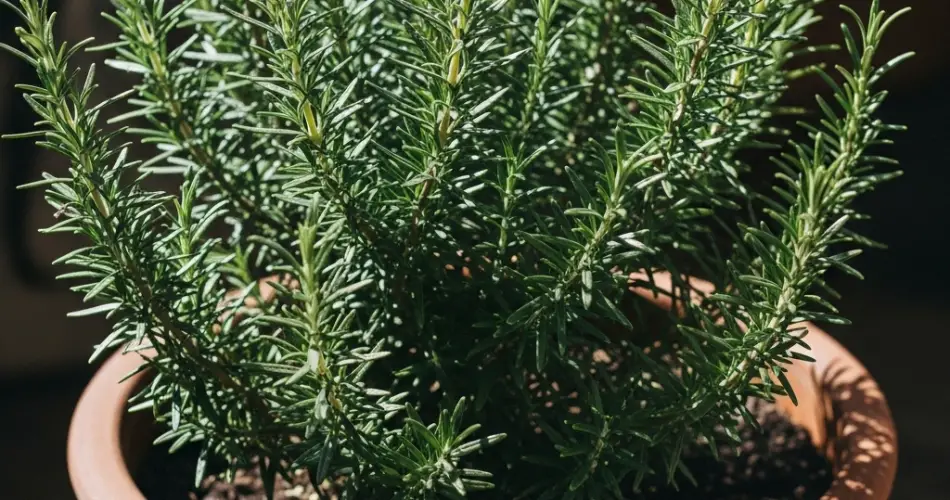Rosemary (Salvia rosmarinus) is a fragrant, evergreen herb cherished for its culinary uses and ornamental appeal. When properly trimmed, rosemary stays healthy, bushy, and productive for many years. Whether you’re growing it in a garden bed, patio pot, or windowsill container, learning how and when to prune is key to preserving its structure and vigor. Here’s a comprehensive, 700-word guide to trimming rosemary for long-term growth.
Why Proper Pruning Matters
Pruning rosemary isn’t just about shaping—it prevents the plant from getting too woody, encourages new growth, and enhances airflow through the foliage. This reduces the risk of disease and helps the plant retain resilience and flavor. Without regular trimming, rosemary can become scraggly, overgrown, and less productive.
When to Trim Rosemary
Spring and early summer are ideal pruning times, just after new growth appears and before summer heat peaks. This timing allows the plant to recover quickly and maintain a full shape. If the rosemary is exceptionally close to flowering, trim immediately afterward to avoid cutting off flower buds.
Light maintenance trimming can be done year-round, especially to shape or harvest sprigs, but save heavier cuts for the growing season when the plant can regrow.
Tools of the Trade
-
Sharp pruning shears or kitchen scissors are recommended for clean, precise cuts.
-
Hand-pruners work well for thicker stems.
-
Sanitize tools with rubbing alcohol before pruning to prevent disease transmission.
Always use clean, sharp tools to reduce trauma and encourage quicker healing.
Step-by-Step Pruning Guide
1. Remove Dead, Diseased, or Crossing Stems
Start by cutting out any dead, yellowing, or diseased branches. Also remove any stems that cross through the plant’s center, as these can block airflow and promote mildew.
2. Thin the Interior
Look inside the plant and remove a few older branches to let light and air reach the core. This renewal encourages stronger new growth and prevents the rosemary from becoming hollow at its base.
3. Shape the Exterior
Trim the outer stems to maintain a tidy, rounded shape. Cut just above a leaf node (where a leaf meets the stem), as this encourages branching. Aim for a shape slightly larger than what you want—the plant will fill in.
4. Harvest While Pruning
Pruned stems can be used fresh or dried for cooking. To prevent overharvesting, remove no more than one-third of the plant at one time.
5. Avoid Cutting into Old Wood
Rosemary does not regenerate well from old, woody stems. Never prune them back beyond green, pliable growth. Only trim woody stems if absolutely necessary and do so sparingly.
Shaping Techniques
-
Maintain a bushy, compact form: Trim all around the plant to encourage fullness.
-
Topiary style: Start with a sturdy central stem and prune side shoots to create a classic ball, teardrop, or formal topiary shape. Trim lightly every 6–8 weeks during the growing season to maintain form.
-
Container growth: Keep the plant roughly its own pot width by trimming back the outer 10–15 cm (4–6 in) of growth each year.
Encouraging Long-Term Health
-
Fertilize lightly after pruning, using a balanced liquid fertilizer once in spring or early summer.
-
Water sparingly: Let the top inch of soil dry out before watering—rosemary prefers drier conditions.
-
Ensure full sun: Aim for 6–8 hours daily; inadequate light leads to lanky growth that requires heavy trimming.
When Heavier Pruning Is Needed
If rosemary has become skinny or has dead wood at the base, more extensive pruning may be required:
-
Cut back the entire plant by one-third, avoiding old wood.
-
Remove only the oldest stems when thinning the interior.
-
Patience is key: It may take a season or two for the plant to regrow fully, but proper watering and fertilizer will help.
After-Pruning Care
Once trimming is complete:
-
Clean up debris to prevent pests and disease.
-
Water thoroughly if the soil is dry.
-
Mulch lightly around the base to conserve moisture and suppress weeds.
-
Monitor regrowth over the following weeks, trimming again if necessary to reinforce the desired shape.
Seasonal and Long-Term Tips
-
Spring: Perform the main pruning after the risk of frost has passed.
-
Summer: Light maintenance pruning is fine, especially to harvest.
-
Fall: Avoid heavy cuts late in the season to prevent frost damage.
-
Winter: Unless your region is frost-free, avoid pruning—let the plant rest.
Troubleshooting Common Issues
-
Leggy growth: Add more light and prune often to encourage bushiness.
-
Sparse interior: Thin the outer foliage to allow air and light inside.
-
Woody stems: Avoid cutting into them; start shaping early before woody growth dominates.
-
Weak regrowth after heavy cutting: Provide light feeding and be patient—regrowth may be slow but will rebound.
Final Thoughts
With thoughtful pruning and care, rosemary can remain lush and vigorous for decades. Removing dead wood, shaping properly, and harvesting judiciously ensures consistent flavor, fragrance, and structure. A well-pruned rosemary plant not only enhances your kitchen but also adds beautiful evergreen appeal to your garden or balcony. Following these trimming tips will keep your rosemary bush productive and attractive for the long haul.



